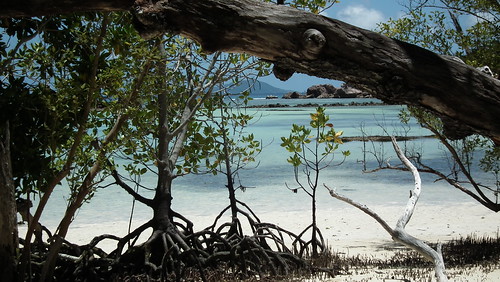首份保育投資調查報告顯示,2009年至2013年間,保育市場投資總額高達230億美元,其中私人投資佔了20億美元,可說是一新興投資市場。
保育投資屬於影響力投資,其目的除了取回本金並創造利潤,還會對自然資源和生態系統形成正面影響。
私人投資比例增加 學者:「錢不是問題」
「投資保育:新興市場評估」是第一份以數據為基礎的保育相關投資市場研究。研究共從56個投資人處直接取得資料與回饋,包括5個營利和非營利開發金融機構和51個私人投資組織。
報告由EKO資產管理公司和美國自然保育協會的自然投資部共同編撰,扮演監督角色的指導委員會,則由大衛與露西兒普卡德基金會、戈登與貝蒂摩爾基金會和摩根大通集團組成。
「報告用數字證實了我們長期觀察到的現象──私人投資投注越來越多的資金在保育事業,不只加強了保育工作,也獲得財務報酬。但這還不夠。報告也顯示,錢不是問題,是勇氣、開創性和創造力的問題。我們需要更多更好的財務投資計畫。如果成功,將能帶來數十億的資金,改善全球的永續糧食供給、保護棲地和水資源。」EKO資產管理公司合夥人、報告共同作者Ricardo Bayon說。
最受投資人青睞:水資源 糧食永續 棲地保育
根據報告獲得的資料,保育投資市場總額在接下來的5年內將增加到371億美元。投資標的主要集中在3個領域:水資源質量保育、永續糧食和纖維生產以及棲地保育。
作者計算出私人投資在2014至18年間將成長兩倍。私人投資每年平均成長26%,到了2018年預計將達到56億。報告預測,私人投資者將在接下來5年內投入15億已募得的資金,並再募集和投資41億。
在總額約20億的私人投資中,有80%來自10個投資者。3個主要的保育投資標的中,開發金融機構投資水質量計畫較多,約150億,私人投資者投資永續糧食和纖維生產最多,約12億。
專家鼓勵私人投資 善加運用影響力
2010年,世界自然保育聯盟(IUCN)指出,要減少生物多樣性流失,2020年前每年必須投資3千億。
但是根據研究,目前的投資金額主要來自政府、多邊機構和慈善家,總額約5百億。為了解決保育影響力投資機會短缺問題,研究作者也列出私人資金可考慮的投資機會。
2014年,在摩根大通的支持下,自然保育協會成立自然投資部門,負責於未來3年召集投資人、發展執行創新金融交易和打造跨產業的投資補給線,善加運用10億影響力資金。
自然投資部正在計畫和印度洋島國賽席爾政府進行債務交換,換取賽席爾促進海洋保育和氣候適應的承諾。自然投資部也打算複製這個模式,幫助其他小島國投資海洋保育,減緩氣候變遷帶來的風險和成本。
The first survey of conservation investing reveals a fast-growing market that totaled $23 billion in the five-year period from 2009-2013. Private investments accounted for almost $2 billion of this market.
Conservation investments, also called conservation impact investments, are intended to return principal or generate profit while driving a positive impact on natural resources and ecosystems.
The report, “Investing in Conservation: A landscape assessment of an emerging market,” is the first data-driven study of the market for conservation-related investments based on direct feedback from investors.
The findings are drawn from a survey of 56 investors, including five for-profit and nonprofit development finance institutions and 51 private investment organizations.
Most of the investments were made in three main areas: water quantity and quality conservation; sustainable food and fiber production; and habitat conservation.
The report was co-authored by EKO Asset Management Partners and The Nature Conservancy’s NatureVest division. It was overseen by a steering committee that also included the David and Lucile Packard Foundation, The Gordon and Betty Moore Foundation, and JPMorgan Chase & Co.
“Our report puts real numbers to what we’ve long suspected – private investors are deploying more capital than before toward investments that lead to both greater conservation and a definable financial return. But more needs to be done,” said Ricardo Bayon, EKO Asset Management partner and co-author of the report.
“What the report tells us is that this is not a money problem. The money is out there. It is about courage, ingenuity, and creativity. It is about coming up with appropriate financeable deals. If we’re successful, it will mean that billions of new dollars will flow into efforts to improve sustainable food supplies, protect habitats, and achieve water conservation around the world,” Bayon said.
Based on the data considered for this study, the total market for conservation investment is expected to increase to $37.1 billion over the next five years.
The authors calculate that private investments in this space are expected to more than triple over the period 2014-2018. Private investments are growing at an average of 26 percent annually, and are expected to reach more than $5.6 billion by 2018.
Of the nearly $2 billion already invested by private investors, 80 percent came from only 10 sources, the survey finds.
Private investors expect to deploy $1.5 billion of already-raised capital over the next five years, and to raise and invest an additional $4.1 billion, the report projects.
Of the three categories of conservation investment studied, development finance institutions invested most in water quality and quantity projects, $15 billion, while private investors invested largely in sustainable food and fiber production, about $1.2 billion.
In 2010, the International Union for the Conservation of Nature, IUCN, said that to halt biodiversity loss $300 billion per year must be invested in conservation by the year 2020.
Yet current levels of investment, mainly from governments, multilateral agencies, and philanthropic sources, total only about $50 billion, according to the new study.
To address the shortage of conservation impact investment opportunities, the study co-authors are working to structure conservation opportunities that can be supported by private capital.
In 2014, with support from JPMorgan Chase & Co., the Nature Conservancy launched NatureVest, a dedicated division focused on deploying $1 billion in impact capital for conservation over the next three years by convening investors, developing and executing innovative financial transactions, and building an investment pipeline across multiple sectors.
For example, NatureVest is mobilizing an $80 million debt-swap for the government of the Indian Ocean island nation of The Seychelles in exchange for their commitment to enhance marine conservation and climate adaptation. The organization aims to replicate this model to help other small island nations invest in marine conservation efforts that will limit the risks and costs posed by climate change.
※ 全文及圖片詳見:ENS





